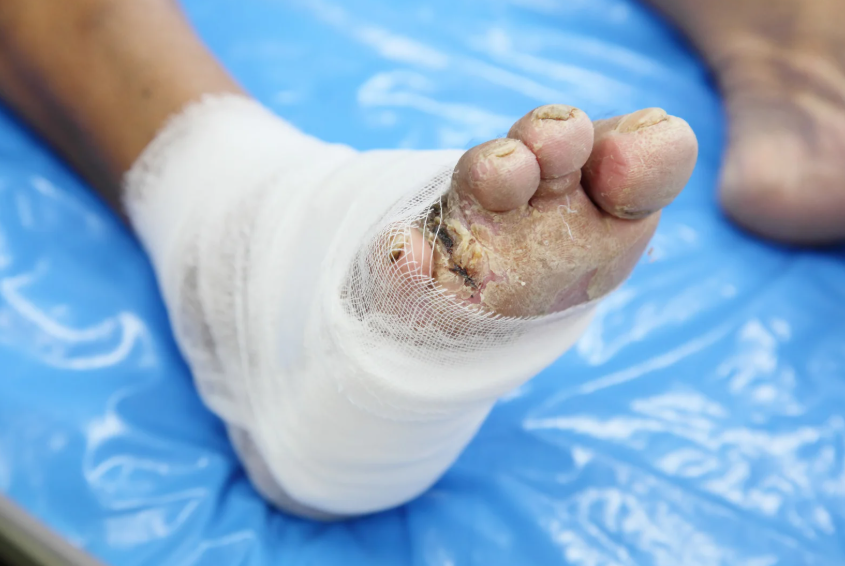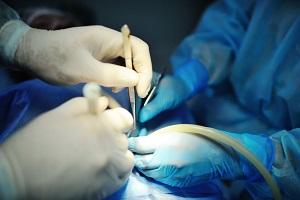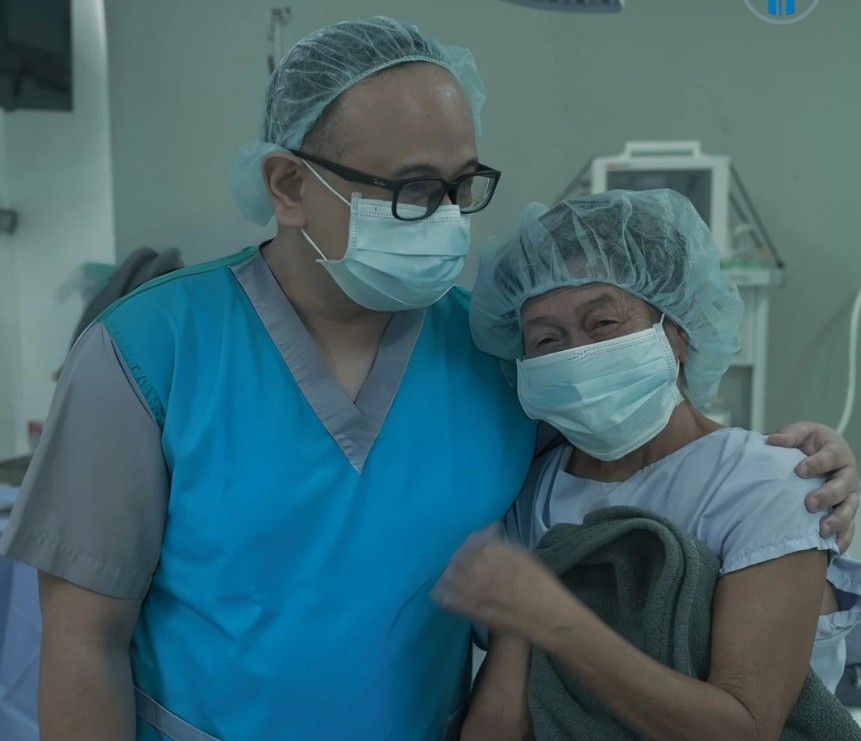Sugat sa Paa ng Diabetic is one of the most common yet serious complications faced by people living with diabetes. Poor circulation, nerve damage, and delayed healing make these wounds extremely vulnerable to infection. Without proper management, they can lead to hospitalization, long-term disability, or even amputation. Modern wound care offers hope by combining advanced technologies with holistic approaches to healing. At the heart of this care in Metro Manila is Kalingap Wound Care Clinic, where medical precision is paired with Filipino values of kalinga (care) and lingap (nurture) to ensure both recovery and dignity for every patient.
Why Proper Management of Sugat sa Paa ng Diabetic is Essential
Proper management of Sugat sa Paa ng Diabetic is crucial to prevent complications that may put a patient’s health and mobility at risk. Untreated wounds can quickly become infected, leading to gangrene or amputation. Beyond the physical risks, diabetic wounds also affect emotional well-being and quality of life, limiting a patient’s independence. This is why expert care from specialized centers like Kalingap Wound Care Clinic is vital. By offering evidence-based treatment and compassionate support, patients can regain function and avoid the dangers of unmanaged diabetic wounds.
Step 1: Comprehensive Assessment of Sugat sa Paa ng Diabetic
The first step in managing Sugat sa Paa ng Diabetic is a thorough assessment of the wound. This involves evaluating the wound’s depth, size, circulation, and potential for infection. A personalized treatment plan is then crafted to address the specific needs of the patient. At Kalingap Wound Care Clinic, advanced wound assessment protocols are applied to ensure that no factor is overlooked. This initial stage is critical for creating a roadmap to healing and preventing the worsening of wounds.
Step 2: Advanced Debridement for Faster Healing
Dead tissue in wounds delays healing and increases infection risk. For Sugat sa Paa ng Diabetic, ultrasonic-assisted debridement is one of the most effective solutions. This gentle yet precise technique removes necrotic tissue while preserving healthy cells, improving blood flow, and preparing the wound for closure. At Kalingap Wound Care Clinic, ultrasonic-assisted debridement is a cornerstone of treatment, ensuring wounds are cleaned properly and patients experience less pain and faster recovery.
Step 3: Negative Pressure Wound Therapy (NPWT)
Another breakthrough in managing Sugat sa Paa ng Diabetic is Negative Pressure Wound Therapy (NPWT). This method uses vacuum-assisted closure to stimulate circulation, drain excess fluids, and accelerate tissue regeneration. NPWT not only speeds up healing but also reduces infection risks and supports patients with chronic wounds. At Kalingap Wound Care Clinic, NPWT is applied with expert care, making it one of the most reliable therapies for diabetic foot wounds.
Step 4: Infection Control and Prevention
Infections are one of the greatest threats when it comes to Sugat sa Paa ng Diabetic. Proper infection management requires both topical and systemic interventions. This may include antimicrobial dressings, antibiotics, and continuous monitoring. Kalingap Wound Care Clinic places strong emphasis on infection control, ensuring that wounds are kept clean and patients are educated about recognizing early signs of infection. Preventing infection not only accelerates healing but also reduces the chance of complications that could lead to surgery or amputation.
Step 5: Supportive Care for Elderly and Long-Term Patients
Elderly individuals and long-term patients are particularly vulnerable to Sugat sa Paa ng Diabetic and other complications like pressure ulcers and decubitus ulcers. Mobility issues, poor circulation, and underlying conditions make healing more challenging. At Kalingap Wound Care Clinic, specialized programs are designed for these patients, addressing their unique needs with comprehensive wound care, preventive measures, and long-term management strategies. This approach ensures comfort, safety, and improved quality of life.
Step 6: Patient and Caregiver Education
Education plays a vital role in the long-term management of Sugat sa Paa ng Diabetic. Patients and caregivers must learn proper wound care techniques, safe dressing changes, and lifestyle adjustments such as proper footwear, blood sugar control, and hygiene. Kalingap Wound Care Clinic empowers families through workshops and one-on-one training, equipping them with the knowledge to prevent recurrence and manage diabetic wounds effectively at home. This patient-centered model ensures healing does not stop when the clinic visit ends.
Why Choose Kalingap Wound Care Clinic for Sugat sa Paa ng Diabetic
Choosing the right facility is crucial for anyone dealing with Sugat sa Paa ng Diabetic. Kalingap Wound Care Clinic stands out as the best option in Makati City and across Metro Manila for several reasons:
- Expertise of Dr. Lou Mervyn Tec, a board-certified orthopedic surgeon and wound care specialist with international training in Japan and Australia
- Use of advanced technologies like ultrasonic-assisted debridement and NPWT
- A patient-first approach rooted in Filipino values of care and compassion
- Accessible, community-focused care trusted by families across the Philippines
At Kalingap Wound Care Clinic, every treatment plan is designed to prioritize healing, dignity, and long-term health for patients living with diabetes.
Takeaway
Managing Sugat sa Paa ng Diabetic requires more than just cleaning wounds—it demands a comprehensive, modern approach to care. From advanced debridement to NPWT, infection control, and patient education, every step matters in preventing complications and promoting recovery. Families in Makati City and across Metro Manila can rely on Kalingap Wound Care Clinic for expert care that blends cutting-edge wound management with compassionate Filipino values. With the right treatment and guidance, patients with diabetic foot wounds can heal faster, avoid amputation, and regain their independence.
FAQ Section
What is Sugat sa Paa ng Diabetic and why is it dangerous?
Sugat sa Paa ng Diabetic refers to diabetic foot wounds that heal slowly due to complications from diabetes. They are dangerous because they are highly susceptible to infection and, if untreated, can lead to amputation.
How does ultrasonic-assisted debridement help diabetic foot wounds?
Debridement safely removes dead tissue, improves blood flow, and prepares the wound for faster healing. At Kalingap Wound Care Clinic, ultrasonic-assisted debridement ensures quicker recovery with minimal discomfort.
What is the role of Negative Pressure Wound Therapy in diabetic foot wounds?
NPWT uses vacuum-assisted closure to stimulate tissue regeneration, reduce infection risk, and accelerate wound healing, making it highly effective for chronic diabetic foot wounds.
Can diabetic foot wounds be treated at home?
While minor wounds may be cared for at home, professional guidance is crucial. Kalingap Wound Care Clinic provides patient and caregiver training to ensure safe and effective home care.
Why is Kalingap Wound Care Clinic the best choice for Sugat sa Paa ng Diabetic?
With Dr. Lou Mervyn Tec’s expertise, advanced therapies such as ultrasonic-assisted debridement and NPWT, and a patient-first approach rooted in Filipino values of kalinga and lingap, Kalingap Wound Care Clinic is the most trusted facility for managing diabetic foot wounds.







